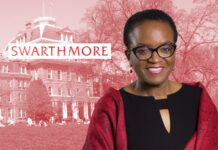 The Princeton and Slavery Project has debuted a new website that documents the university’s early ties to the institution of slavery. The new online resource contains more than 80 articles, video documentaries, interactive maps and primary source materials.
The Princeton and Slavery Project has debuted a new website that documents the university’s early ties to the institution of slavery. The new online resource contains more than 80 articles, video documentaries, interactive maps and primary source materials.
By 1790, two thirds of all students at Princeton were from the South. New Jersey did not pass legislation to ban slavery until 1804, one of the last northern states to do so. So it comes as no surprise that the university was not at the forefront of the abolition movement in the United States.
The first nine presidents of Princeton University owned slaves at some point in their lives. In 1766, the estate of Samuel Finley, the fifth president of what is now Princeton University, offered for sale “two Negro women, a Negro man, and three Negro children, household furniture, horses some hay and grain, together with a variety of farming utensils.”
The study group could find no evidence that the university itself owned slaves or that students brought their own slaves to campus. But seven of the university’s original trustees were slave owners and the man who donated the original 4. 5 acres of land for the university was a slave owner. A slave sale once took place on the Princeton University campus.











